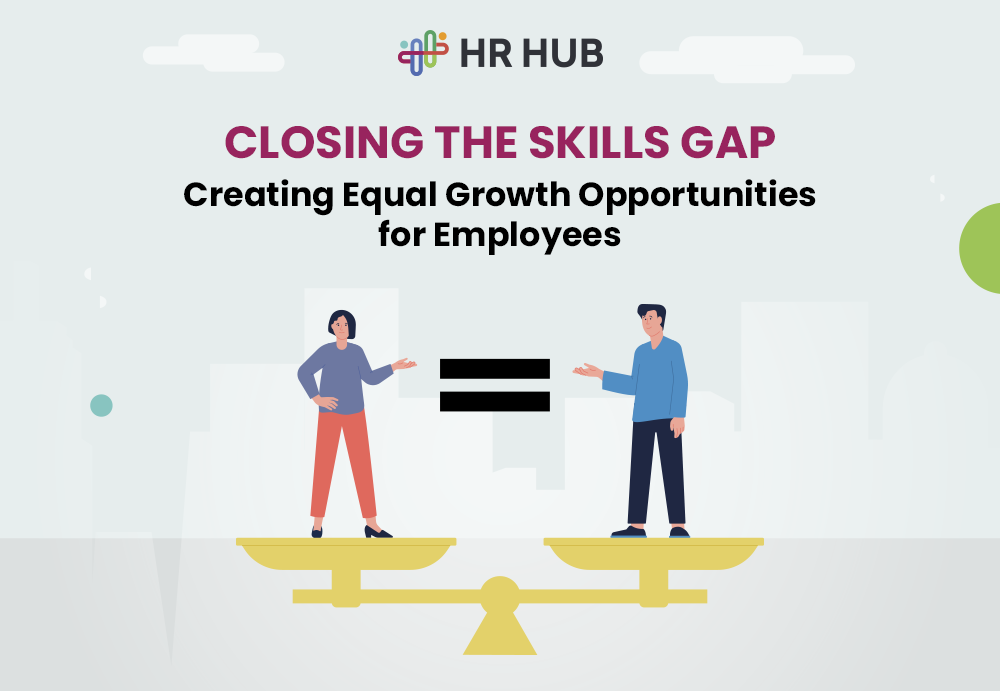Maternity and Paternity Leave in India: Policy, Importance, and Benefits
- Work Culture & Experience


In the rapidly changing labor market today, businesses globally have a major issue that remains unaddressed most frequently: the widening skills gap.
Due to shifting technology and the dynamism of markets, employees are usually hampered by stagnant skills that are inadequate for the needs of the job.
The gap hinders personal career growth and impacts organizational growth and competitiveness. Integrating strong employee life cycle management systems is important in resolving these issues, getting employees off to a good start, and continuing to develop and change through successful training programs.
The skills gap is between employees' skills and the skills required to execute their job functions effectively. It occurs in all industries, from technology and healthcare to manufacturing and education.
It is compounded by rapid technological advancements that make some skills obsolete almost as quickly as new skills become necessary.
Closing the skills gap is no easy task and involves several challenges based on structural inequities and technological acceleration:
One of the primary difficulties is the unequal availability of training.
Staff members employed in smaller enterprises or lower-tier jobs are normally disadvantaged, having fewer resources and assistance to partake in professional advancement courses.
This gap can hinder their career development and reduce their potential to benefit their employers.
The pace of technology change is constant, with new tools and processes continually redefining businesses.
The pace of change can lead to a vast disparity between workers' skills and the skills required in the workplace, with organizations struggling to keep their staff up-to-date and competitive.
Creating and providing effective training programs can be expensive, especially for small organizations with limited budgets.
The expense is creating and distributing training materials, as well as the operational cost of removing employees from their normal work to receive training.

In certain organizational cultures, continuous learning lacks priority, and therefore, the workforce may become less inclined toward further education or learning and skills development.
The full potential of training programs might not be realized without a cultural transformation that appreciates and promotes continuous professional development.
To overcome these challenges, employers can adopt several strategic approaches:
Utilizing advanced employee training and development software enables the establishment of customized training routes that cater to organizational objectives and individual career ambitions.
Such software can serve a multicultural workforce with diverse learning patterns and work schedules, enabling skill enhancement to be within everyone's reach.
Using employee training management software can make the organization, delivery, and administration of training programs more efficient.
The tools can improve the effectiveness of training efforts, making it easy to update training to make it current and to have managers monitor progress and effectiveness.
Also, employers can invest in training solutions that can scale up along with the company's growth.
Cloud-based learning platforms, for example, are flexible in terms of pricing plans and can be scaled up depending on the size and requirements of the business; hence, they are a cost-effective approach to continuous employee development.

Let’s deep dive into the growth opportunities that you need to take care of dealing with the employee-driven aspects.
Developing a culture emphasizing self-learning and continuous professional growth is crucial to bridging the skills gap. Employers can contribute importantly to this by:
Building organisational systems for sharing employees' skills can contribute to a more knowledgeable and activated workforce. These systems can take many different forms:
Leadership should make sure that growth and development opportunities are not just available but also equally accessible to all members of the organization:
Leaders can motivate their teams by actively engaging in the same development programs and learning from each other's experiences:
The future of work demands flexibility.

Firms that invest in comprehensive training and development initiatives are positioning themselves for success in a more dynamic business world.
Lastly, bridging the skills gap is not just plugging a hole; it's building a successful and engaging work environment where everyone can thrive.
Investing in software solutions like HR HUB can significantly contribute to an organisation's people development and management across the employee life cycle.
Through a culture of ongoing improvement and equity of opportunity, organisations can train their staff to address the requirements of today's needs and possibilities for tomorrow.